What is the Difference Between Kali, Eskrima, and Arnis?
May 5th, 2025
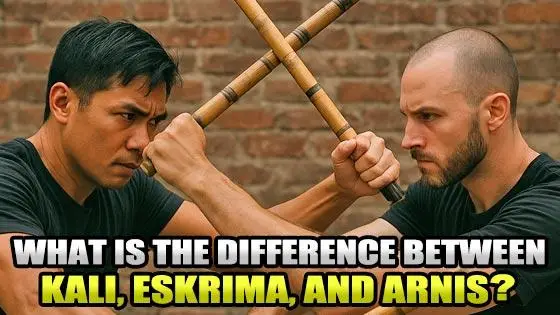
Filipino martial arts (FMA) are known for their devastatingly effective techniques and their emphasis on using weapons - especially sticks, knives, and swords - along with empty-hand skills. Among the many FMA systems, Kali, Eskrima, and Arnis are three of the most recognized names. While these terms are often used interchangeably, there are distinctions in their usage, history, and approach. To fully understand the differences, we must delve into their origins, development, and how each system is practiced today.
Origins of Filipino Martial Arts
The history of Kali, Eskrima, and Arnis is deeply rooted in the cultural and military history of the Philippines. For centuries, Filipino warriors faced both indigenous and foreign invaders. From the pre-colonial period through the Spanish colonization, Filipinos developed unique methods of combat using whatever weapons were available, including sticks, knives, and even improvised tools. As a result, Filipino martial arts are an amalgamation of native traditions and the influences of foreign invaders, such as the Chinese and Spanish.
The name "Kali" is believed to have originated from the ancient Filipino word "Kalis," meaning sword, or from the word "Kali" itself, referring to the Filipino word for combat. The term "Eskrima" comes from the Spanish word "Esgrima," which means fencing or swordsmanship, while "Arnis" is derived from "arnis de mano," which means "harness of the hand" in Spanish, referring to a focus on weapons used in hand-to-hand combat.
Kali: The Foundation of Filipino Martial Arts
Kali is often regarded as the oldest and most traditional form of Filipino martial arts. It is considered the root of both Eskrima and Arnis, with its origins dating back to the early Filipino tribes before Spanish colonization. Kali emphasizes a comprehensive range of combat techniques, including weapons (such as sticks, knives, and swords), grappling, and empty-hand fighting.
Historically, Kali was used as a self-defense system by indigenous Filipinos, primarily in the context of warfare and tribal defense. During the Spanish colonial period, the Filipino people, who were not allowed to own firearms, turned to sticks and blades as their primary means of defense. Kali was used to defend against both foreign invaders and other local rival tribes. The focus in Kali is on fluidity, adaptability, and practicality, with techniques that flow seamlessly from one movement to the next.
The defining feature of Kali is its emphasis on fighting with weapons from the very start. Training typically begins with single and double-stick fighting before progressing to empty-hand techniques and other weapons, such as knives and swords. Kali is deeply rooted in the Filipino philosophy of fighting "anywhere, anytime," adapting to various environments and situations. The use of sticks is just as effective in defending against knives, swords, or even unarmed combat. Kali practitioners often train in various "flow drills," where they engage in prearranged sequences of movements to develop speed, timing, and coordination.
Eskrima: The Martial Art of Stick Fighting
Eskrima is the term most commonly used in the Philippines to describe the system of stick fighting and weapon-based combat. Eskrima, like Kali, is deeply embedded in the history of the Philippines, and the terms are often used interchangeably. However, Eskrima tends to focus more specifically on the use of sticks as weapons, especially in sparring and combat situations.
The word "Eskrima" derives from the Spanish term "Esgrima," meaning fencing, which is why Eskrima is sometimes seen as a blend of both Spanish swordsmanship and indigenous Filipino martial arts. Eskrima, while similar to Kali, places more emphasis on the structured, tactical use of weapons in both combat and self-defense scenarios. Eskrima practitioners often focus on using one stick (single-stick fighting) or two sticks (double-stick fighting) to deliver strikes, blocks, thrusts, and sweeps. The principles of movement in Eskrima closely mirror that of fencing, where precision, timing, and distance are critical.
Like Kali, Eskrima also teaches hand-to-hand combat techniques, but the weaponry is more emphasized in its training curriculum. Traditional Eskrima includes learning various weaponry combinations and applying them in realistic combat scenarios, such as street fights, ambushes, and tactical scenarios. Historically, Eskrima was used by Filipinos to defend against armed invaders - particularly the Spanish colonizers. There are accounts of Filipino warriors wielding sticks (often made of rattan) in coordinated ambushes and skirmishes, using their agile and precise techniques to outmaneuver better-armed opponents.
Eskrima training is typically divided into three ranges of combat: long range, medium range, and close range. Long-range combat involves using the escrima sticks to strike or block at a distance, while medium range focuses on quick strikes and counters. In close-range combat, the Eskrima practitioner transitions to using their stick for control, joint locks, or striking vital points of the opponent.
Arnis: The Art of Hand-to-Hand and Stick Fighting
Arnis, often referred to as "Arnis de Mano" (harness of the hand), is a term widely used today in the Philippines and internationally. It focuses on the use of sticks, blades, and empty-hand techniques, incorporating elements from both Kali and Eskrima. Arnis is most commonly practiced in the Philippines in formal schools or dojo settings, and it is often used in competition, both for sport and in self-defense.
In the late 1800s, the term "Arnis" came into popular use as a way of unifying the various regional systems of martial arts in the Philippines. The rise of Arnis marked a period when the Filipino people were trying to preserve their cultural heritage and martial practices during the Spanish occupation. In modern times, Arnis is the term most often used when referring to Filipino martial arts in both the Philippines and abroad.
Like Eskrima and Kali, Arnis emphasizes weapons training, particularly with sticks, but it also integrates other weaponry, including knives, swords, and improvised tools. One of the distinctive aspects of Arnis is its combination of both armed and unarmed techniques, with practitioners learning to switch between weapons and empty-hand skills in the heat of combat.
Arnis practitioners often train in Serrada (close-range techniques) and Dos Manos (two-handed techniques), emphasizing control, timing, and the flow of attack. The art also places a strong emphasis on learning defensive tactics, such as blocking, parrying, and counter-striking. Arnis can be seen as a more sport-oriented version of Eskrima, with greater emphasis on self-defense and practical applications for modern-day practitioners.
How They Differ in Combat Scenarios
Though Kali, Eskrima, and Arnis share a common heritage and many overlapping techniques, they differ in their focus and practical application.
Kali is most suited to those who want a well-rounded martial art that incorporates both weapons and unarmed combat. It is particularly effective in unpredictable, real-world combat situations where adaptability is key. Kali was historically used in ambush-style combat and guerrilla warfare, often in tight spaces where the ability to flow between different weapons and bare-handed techniques was critical.
Eskrima shines in situations that demand quick reflexes and tactical, precise strikes. Eskrima is particularly effective for defending against armed attackers using sticks, knives, or even swords. The system's focus on distance and angles makes it ideal for one-on-one combat scenarios, whether in a street fight or structured sparring environment.
Arnis, while largely synonymous with Eskrima, includes a wider focus on empty-hand techniques and tactical defensive maneuvers. Arnis practitioners are often better equipped for varied combat scenarios where both armed and unarmed defense is needed, such as defending against multiple opponents or transitioning from weapons to hand-to-hand combat.
Conclusion
Kali, Eskrima, and Arnis each offer a unique perspective on Filipino martial arts. While they share a common origin, each art has evolved to meet specific needs, whether for historical combat, self-defense, or modern-day sports. Kali is often considered the root system, focusing on a comprehensive range of weapons and hand-to-hand techniques. Eskrima is more stick-centric and emphasizes tactical precision and speed, whereas Arnis is a more contemporary system that blends armed and unarmed techniques with an emphasis on practical defense.
No matter which system one practices, the goal is the same: mastering the fluidity, adaptability, and precision required to succeed in combat. Understanding the differences between Kali, Eskrima, and Arnis will give you a deeper appreciation of Filipino martial arts and their timeless effectiveness.
The history of Kali, Eskrima, and Arnis is deeply rooted in the cultural and military history of the Philippines. For centuries, Filipino warriors faced both indigenous and foreign invaders. From the pre-colonial period through the Spanish colonization, Filipinos developed unique methods of combat using whatever weapons were available, including sticks, knives, and even improvised tools. As a result, Filipino martial arts are an amalgamation of native traditions and the influences of foreign invaders, such as the Chinese and Spanish.
The name "Kali" is believed to have originated from the ancient Filipino word "Kalis," meaning sword, or from the word "Kali" itself, referring to the Filipino word for combat. The term "Eskrima" comes from the Spanish word "Esgrima," which means fencing or swordsmanship, while "Arnis" is derived from "arnis de mano," which means "harness of the hand" in Spanish, referring to a focus on weapons used in hand-to-hand combat.
Kali: The Foundation of Filipino Martial Arts
Kali is often regarded as the oldest and most traditional form of Filipino martial arts. It is considered the root of both Eskrima and Arnis, with its origins dating back to the early Filipino tribes before Spanish colonization. Kali emphasizes a comprehensive range of combat techniques, including weapons (such as sticks, knives, and swords), grappling, and empty-hand fighting.
Historically, Kali was used as a self-defense system by indigenous Filipinos, primarily in the context of warfare and tribal defense. During the Spanish colonial period, the Filipino people, who were not allowed to own firearms, turned to sticks and blades as their primary means of defense. Kali was used to defend against both foreign invaders and other local rival tribes. The focus in Kali is on fluidity, adaptability, and practicality, with techniques that flow seamlessly from one movement to the next.
The defining feature of Kali is its emphasis on fighting with weapons from the very start. Training typically begins with single and double-stick fighting before progressing to empty-hand techniques and other weapons, such as knives and swords. Kali is deeply rooted in the Filipino philosophy of fighting "anywhere, anytime," adapting to various environments and situations. The use of sticks is just as effective in defending against knives, swords, or even unarmed combat. Kali practitioners often train in various "flow drills," where they engage in prearranged sequences of movements to develop speed, timing, and coordination.
Eskrima: The Martial Art of Stick Fighting
Eskrima is the term most commonly used in the Philippines to describe the system of stick fighting and weapon-based combat. Eskrima, like Kali, is deeply embedded in the history of the Philippines, and the terms are often used interchangeably. However, Eskrima tends to focus more specifically on the use of sticks as weapons, especially in sparring and combat situations.
The word "Eskrima" derives from the Spanish term "Esgrima," meaning fencing, which is why Eskrima is sometimes seen as a blend of both Spanish swordsmanship and indigenous Filipino martial arts. Eskrima, while similar to Kali, places more emphasis on the structured, tactical use of weapons in both combat and self-defense scenarios. Eskrima practitioners often focus on using one stick (single-stick fighting) or two sticks (double-stick fighting) to deliver strikes, blocks, thrusts, and sweeps. The principles of movement in Eskrima closely mirror that of fencing, where precision, timing, and distance are critical.
Like Kali, Eskrima also teaches hand-to-hand combat techniques, but the weaponry is more emphasized in its training curriculum. Traditional Eskrima includes learning various weaponry combinations and applying them in realistic combat scenarios, such as street fights, ambushes, and tactical scenarios. Historically, Eskrima was used by Filipinos to defend against armed invaders - particularly the Spanish colonizers. There are accounts of Filipino warriors wielding sticks (often made of rattan) in coordinated ambushes and skirmishes, using their agile and precise techniques to outmaneuver better-armed opponents.
Eskrima training is typically divided into three ranges of combat: long range, medium range, and close range. Long-range combat involves using the escrima sticks to strike or block at a distance, while medium range focuses on quick strikes and counters. In close-range combat, the Eskrima practitioner transitions to using their stick for control, joint locks, or striking vital points of the opponent.
Arnis: The Art of Hand-to-Hand and Stick Fighting
Arnis, often referred to as "Arnis de Mano" (harness of the hand), is a term widely used today in the Philippines and internationally. It focuses on the use of sticks, blades, and empty-hand techniques, incorporating elements from both Kali and Eskrima. Arnis is most commonly practiced in the Philippines in formal schools or dojo settings, and it is often used in competition, both for sport and in self-defense.
In the late 1800s, the term "Arnis" came into popular use as a way of unifying the various regional systems of martial arts in the Philippines. The rise of Arnis marked a period when the Filipino people were trying to preserve their cultural heritage and martial practices during the Spanish occupation. In modern times, Arnis is the term most often used when referring to Filipino martial arts in both the Philippines and abroad.
Like Eskrima and Kali, Arnis emphasizes weapons training, particularly with sticks, but it also integrates other weaponry, including knives, swords, and improvised tools. One of the distinctive aspects of Arnis is its combination of both armed and unarmed techniques, with practitioners learning to switch between weapons and empty-hand skills in the heat of combat.
Arnis practitioners often train in Serrada (close-range techniques) and Dos Manos (two-handed techniques), emphasizing control, timing, and the flow of attack. The art also places a strong emphasis on learning defensive tactics, such as blocking, parrying, and counter-striking. Arnis can be seen as a more sport-oriented version of Eskrima, with greater emphasis on self-defense and practical applications for modern-day practitioners.
How They Differ in Combat Scenarios
Though Kali, Eskrima, and Arnis share a common heritage and many overlapping techniques, they differ in their focus and practical application.
Kali is most suited to those who want a well-rounded martial art that incorporates both weapons and unarmed combat. It is particularly effective in unpredictable, real-world combat situations where adaptability is key. Kali was historically used in ambush-style combat and guerrilla warfare, often in tight spaces where the ability to flow between different weapons and bare-handed techniques was critical.
Eskrima shines in situations that demand quick reflexes and tactical, precise strikes. Eskrima is particularly effective for defending against armed attackers using sticks, knives, or even swords. The system's focus on distance and angles makes it ideal for one-on-one combat scenarios, whether in a street fight or structured sparring environment.
Arnis, while largely synonymous with Eskrima, includes a wider focus on empty-hand techniques and tactical defensive maneuvers. Arnis practitioners are often better equipped for varied combat scenarios where both armed and unarmed defense is needed, such as defending against multiple opponents or transitioning from weapons to hand-to-hand combat.
Conclusion
Kali, Eskrima, and Arnis each offer a unique perspective on Filipino martial arts. While they share a common origin, each art has evolved to meet specific needs, whether for historical combat, self-defense, or modern-day sports. Kali is often considered the root system, focusing on a comprehensive range of weapons and hand-to-hand techniques. Eskrima is more stick-centric and emphasizes tactical precision and speed, whereas Arnis is a more contemporary system that blends armed and unarmed techniques with an emphasis on practical defense.
No matter which system one practices, the goal is the same: mastering the fluidity, adaptability, and precision required to succeed in combat. Understanding the differences between Kali, Eskrima, and Arnis will give you a deeper appreciation of Filipino martial arts and their timeless effectiveness.
You May Also Be Interested In:
Leave a Reply







 (1)
(1)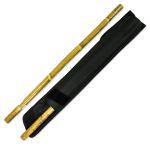
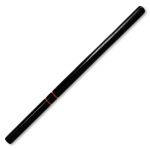
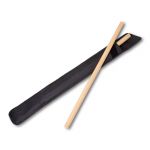
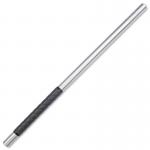
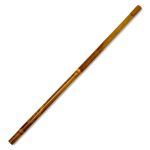
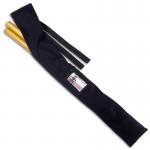


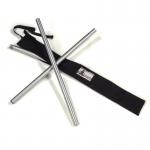
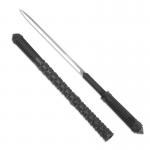
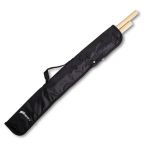
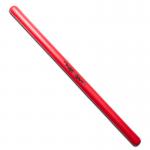
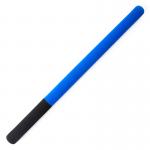
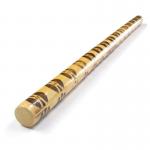
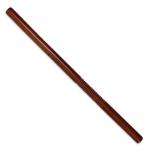




















KarateMart Response: Great question, Roberto! Unfortunately, its not really something that can be answered because it completely depends on the instructor and the techniques you are learning in either of those martial arts. Thanks so much for reading our blog post and asking an excellent question!"